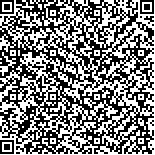| 摘要: |
| 对不同地区地震波传播条件进行分析,认为能量屏蔽作用的产生机制有3种:一是强反射界面引起反射型能量屏蔽;二是强黏滞层剧烈吸收损耗引起的耗散型能量屏蔽;三是粗糙面上或非均质介质中的地震波散射引起的散射型能量屏蔽。有时强能量耗散带与强反射界面伴生,产生双重能量屏蔽作用。根据3类能量屏蔽作用机制,提出克服或减少能量屏蔽作用的7种方法:①优化测线部署避开强能量耗散带和散射带;②从激发、接收方面增加透过能量;③优化观测方式避开屏蔽段;④采用高密度地震勘探增加有效接收道;⑤用处理手段消除由强反射界面衍生的多次波、折射波,以及屏蔽带衍生的其他干扰;⑥用转换横波勘探以增大强反射界面的最大透射能量窗;⑦黄土塬区适当结合弯线勘探以减少黄土层的强吸收屏蔽和黄土层底界的强反射屏蔽。 |
| 关键词: 能量屏蔽 形成机制 地震波 反射 透射 耗散 散射 |
| DOI:10.3969/j.issn.1673-5005.2011.05.008 |
| 分类号::P 31 |
| 文献标识码:A |
| 基金项目:国土资源部“全国油气资源战略选区调查与评价”项目(XQ-2007-01) |
|
| Types of energy shielding effect, formation mechanism and countermeasures |
|
YANG Qing dao1, WANG Wei feng1, YIN Yi dong2, ZHAO Yu sheng2, LI Ji bai2, HU Jian hui2
|
|
(1.School of Geosciences in China University of Petroleum, Qingdao 266555, China;2.Yunnan Geophysical Company of Southwest Petroleum Bureau, SINOPEC, Kumming 650233, China)
|
| Abstract: |
| By analyzing the seismic wave transmission conditions for different areas, three types of formation mechanism of energy shielding effect were proposed. Besides the energy shielding effect caused from strong reflection interface which is named as reflecting shielding, there are two mechanisms which greatly reduce the transmission energy and greatly degrade the seismic data quality. One is named as dissipation shielding where there are one or more strong viscous dissipation layers absorbing most of seismic energy rapidly. The other is named as dispersion shielding where there are one or more strong scattering belts scattering most of seismic energy to different directions. In some cases there are intense reflection interfaces as well as dissipation layers or dispersion belts which give rise to dual shielding effect. On the basis of the mechanism of the energy shielding effect, the following countermeasures were proposed to deal with the energy shielding effect:① optimizing the line deployment to avoid the energy shielding belt as far as possible, ② increasing the transmission energy from shooting and receiving, ③ selecting reasonable ways of observation on the basis of forward modeling of shielding interfaces or belts, ④ introducing the high density seismic survey with small group intervals to increase the effective channels of receiving, ⑤ eliminating noises such as multiples, ground roll waves derived from strong interfaces or other dispersion belts by means of seismic processing, ⑥ increasing the maximum transmission windows of strong reflection interfaces by means of converted wave seismic exploration prospecting, ⑦ introducing crooking lines seismic survey to reduce the dissipation or reflection shielding in Loess areas. |
| Key words: energy shielding formation mechanism seismic wave reflection transmission dissipation dispersion |

